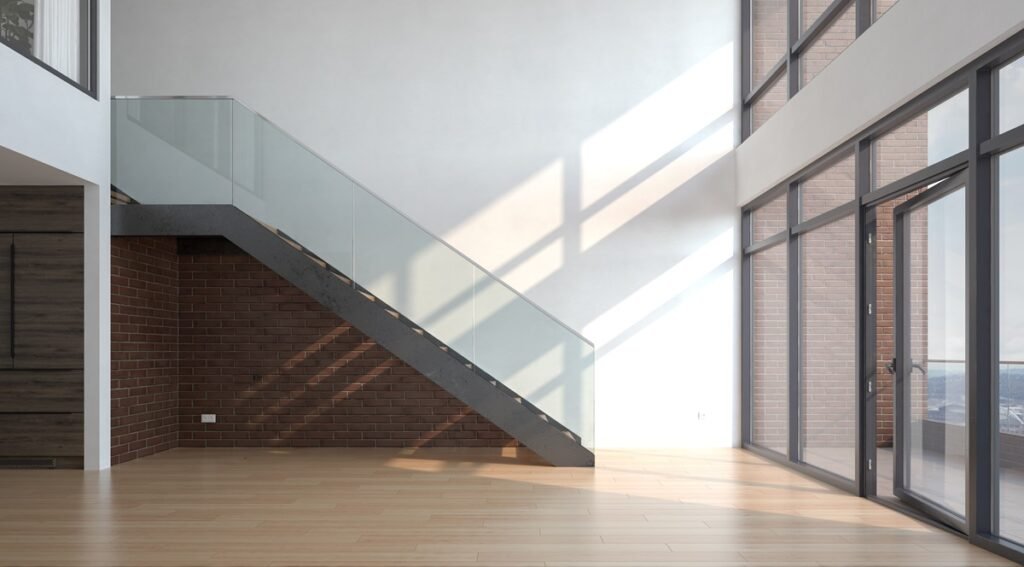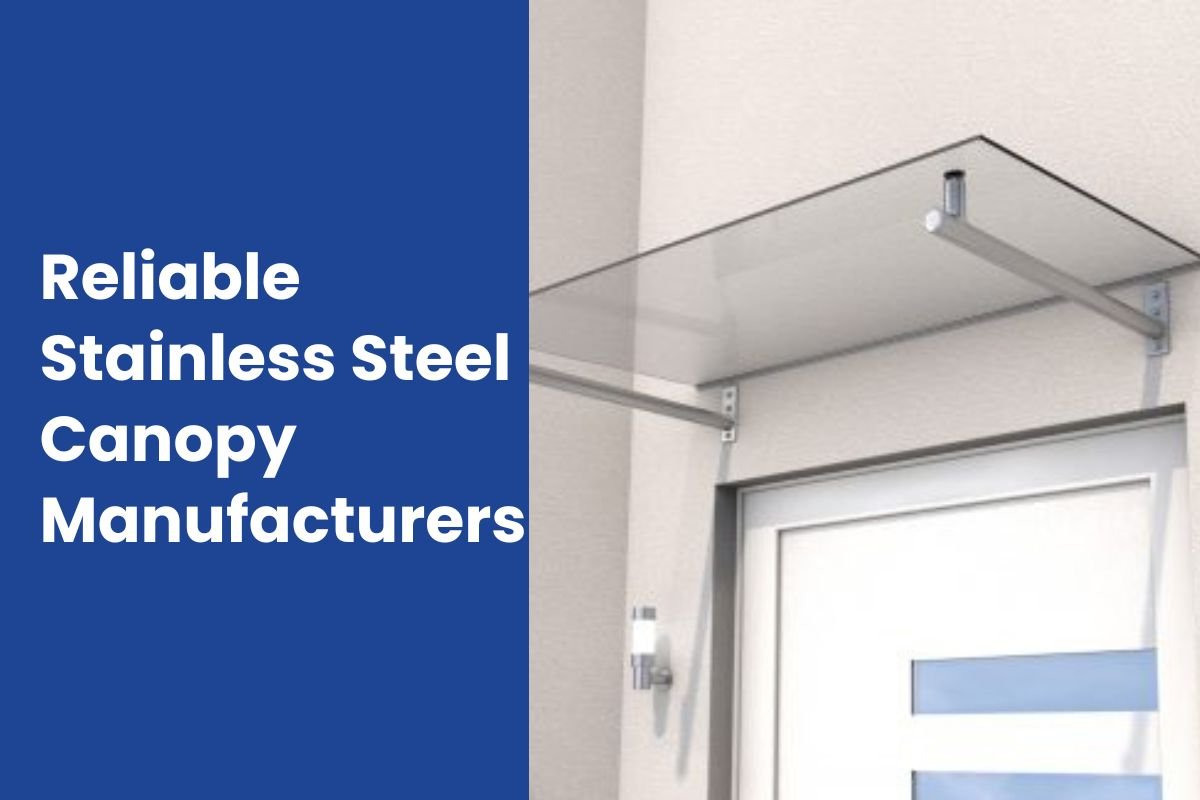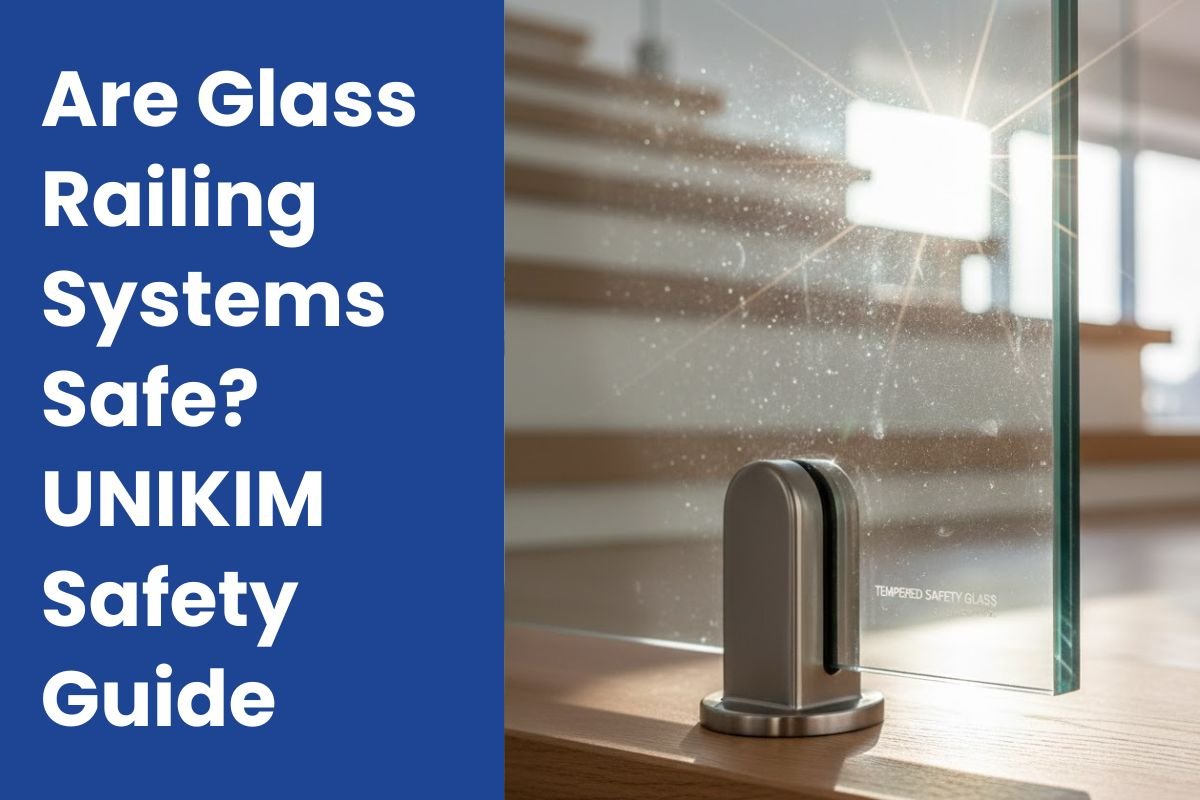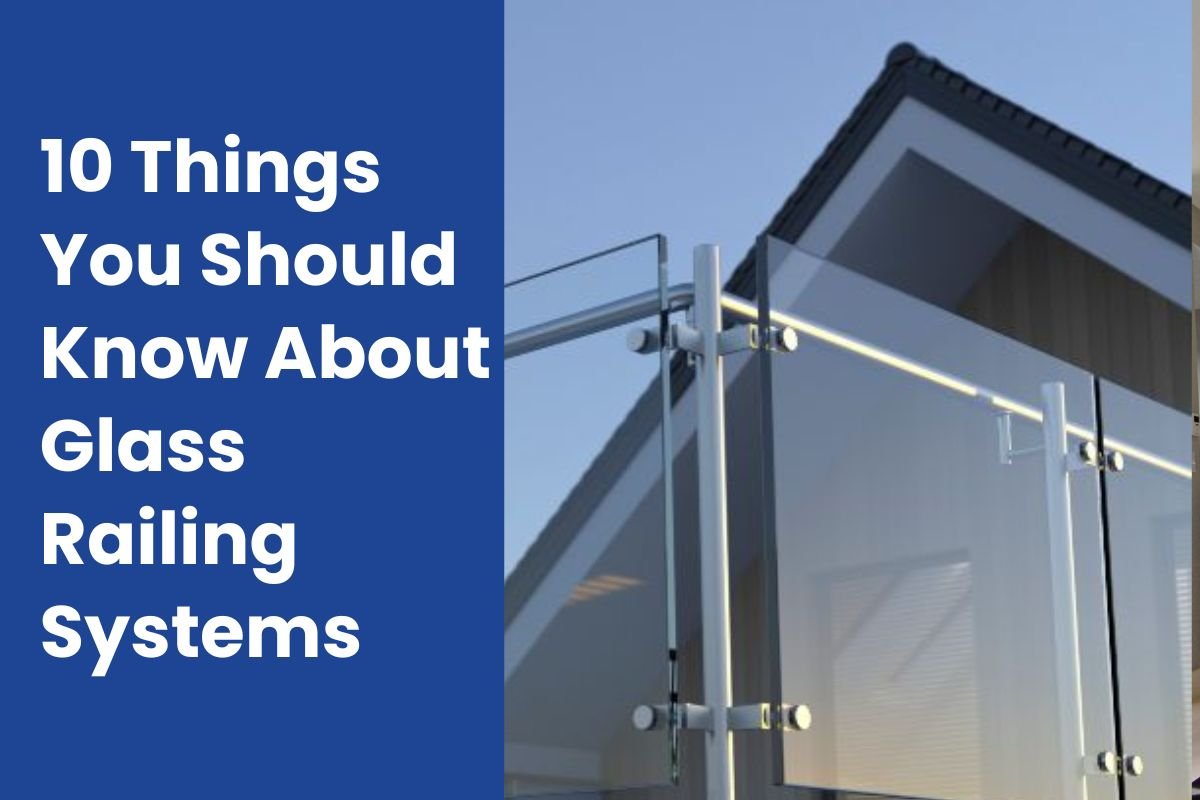Glass railing systems have revolutionized modern architecture and home design, offering an unparalleled combination of safety, functionality, and aesthetic appeal. If you’ve ever wondered how these transparent barriers manage to provide structural integrity while maintaining an open, airy feel, you’re in the right place. Understanding how glass railing systems work is essential whether you’re a homeowner planning a renovation, an architect designing a new space, or a contractor looking to expand your knowledge.
At URailing, we specialize in providing premium glass railing systems that blend cutting-edge engineering with stunning design. In this comprehensive guide, we’ll explore the mechanics, components, installation processes, and the science behind these remarkable architectural features.
What Are Glass Railing Systems?
Glass railing systems are barriers made primarily of glass panels, supported by frames, posts, or clamps. They are commonly used for balconies, staircases, decks, and terraces to provide safety without obstructing views. The transparency of glass allows natural light to flow through, creating an open and airy feel in any space.
These systems are available in various designs, including framed, frameless, and semi-frameless options, catering to different architectural needs. Whether you’re looking for a modern look or a classic design, glass railings can be customized to match your preferences.
For more information on the types of glass railing systems available, visit our Glass Railing Systems Supplier page.
The Science Behind How Glass Railing Systems Work
At first glance, glass railing systems might seem like magic—transparent panels standing tall without visible support. But there’s serious engineering behind that elegance.

Here’s how the magic happens:
a. The Glass Panels
The panels are usually made of tempered glass or laminated safety glass, both known for their strength and safety.
- Tempered glass is up to five times stronger than regular glass. If it breaks, it shatters into small, blunt pieces instead of sharp shards.
- Laminated glass features two or more glass layers bonded by a resin interlayer, keeping the structure intact even if it cracks.
b. Support System
Glass panels don’t float in the air—they’re supported by engineered frames, channels, or clamps.
Common support types include:
- Base shoe or channel systems that hold the glass at the bottom.
- Spigot systems using stainless steel clamps to secure panels individually.
- Post-mounted systems where glass is fixed between vertical metal posts.
These support structures are usually made from stainless steel or aluminum, both resistant to corrosion and ideal for outdoor use.
c. Fastening and Sealing
To ensure durability, rubber gaskets, sealants, and metal clips are used to secure the glass without stress fractures. Precision engineering ensures there’s just enough flexibility to absorb movement caused by wind or temperature changes.
Benefits of Glass Railing Systems
Glass railing systems offer numerous advantages, making them a preferred choice for architects and homeowners alike. Here are some key benefits:
- Unobstructed Views: The transparent nature of glass provides clear sightlines, perfect for scenic locations.
- Durability: Made from tempered or laminated glass, these systems are resistant to weather and wear.
- Low Maintenance: Glass railings are easy to clean and require minimal upkeep.
- Versatility: Available in various designs and finishes, they can complement any architectural style.
- Safety: Compliant with building codes, ensuring a secure environment for users.
Explore the Benefits of Custom Glass Railing Designs to learn how you can personalize your railing system.
The Essential Components That Make Glass Railing Systems Function
To truly understand how glass railing systems work, we need to examine each component that contributes to the overall functionality. Every element plays a crucial role in creating a safe, durable, and visually stunning railing system.
Tempered Glass Panels: The Core Element
Tempered glass is the backbone of most glass railing systems, and for good reason. This specially heat-treated glass is approximately four to five times stronger than standard annealed glass. The tempering process involves heating the glass to extreme temperatures (around 620°C or 1,148°F) and then rapidly cooling it with high-pressure air jets.
This rapid cooling creates a state of compression on the glass surfaces while the interior remains in tension. The result is a glass panel that can withstand significant impact and pressure without breaking. When tempered glass does break—which is rare under normal circumstances—it shatters into small, relatively harmless cubes rather than dangerous shards, making it an ideal safety material.
The typical thickness for glass railing panels ranges from 10mm (3/8 inch) to 19mm (3/4 inch), depending on the application, mounting method, and local building codes. Thicker glass provides greater strength and rigidity, which is particularly important for taller railings or those exposed to high wind loads.
Aluminum Profiles: Structural Support Systems
Aluminum profiles serve as the skeletal framework for many glass railing installations, particularly in channel or shoe-mounted systems. Extruded aluminum components are engineered with precise dimensions and internal features to securely install glass panels.
The beauty of aluminum lies in its exceptional strength-to-weight ratio. Aluminum profiles can support substantial loads while remaining lightweight and easy to install. They’re also naturally resistant to corrosion, making them ideal for outdoor applications, coastal environments, and areas with high moisture exposure.
Modern aluminum profiles often feature sophisticated designs with built-in drainage channels, adjustable fitting systems, and concealed fastening mechanisms. These profiles come in various finishes—from powder-coated colors to anodized surfaces—allowing them to complement any architectural style. You can explore various glass railing systems that utilize premium aluminum profiles.
Glass Spigots: Point-Fixed Mounting Solutions
Glass spigots are specialized mounting hardware that secure glass panels at discrete points along their bottom edge. These cylindrical or rectangular fittings create a semi-frameless appearance by eliminating the need for continuous top and bottom rails.
The genius of spigot systems lies in their engineering.Each spigot clamps the glass firmly while allowing for controlled flexing and stress distribution. The clamping mechanism typically uses stainless steel bolts that pass through the spigot body, creating a sandwich effect with rubber or neoprene gaskets protecting the glass edges.
People most commonly use spigots in outdoor applications such as pool fencing, deck railings, and balconies to achieve maximum visibility and airflow. Engineers carefully calculate the spacing between spigots based on glass thickness, panel height, and expected loads. Properly installed spigot systems can create stunning visual effects while maintaining exceptional structural integrity.
Glass Standoffs: Creating Frameless Elegance
Glass standoffs represent the pinnacle of minimalist railing design, creating the appearance of glass panels floating in space with minimal visible hardware. These small but mighty components mount directly to wall surfaces or posts and secure the glass panels at specific points.
Unlike spigots that mount to the floor or base surface, standoffs attach to vertical surfaces—either structural walls or dedicated posts. Each standoff consists of a base plate, a threaded barrel or post, and clamping hardware that grips the glass panel. The standoff design allows for some flexibility in positioning during installation, making alignment easier.
The engineering behind standoffs involves careful consideration of cantilever forces. Since the glass is supported at points rather than along its entire edge, the mounting hardware must resist both shear and tensile forces. High-quality standoffs, like those offered at URailing, are manufactured from marine-grade stainless steel to ensure long-lasting performance.
Cap Rails and Handrails: Comfort and Compliance
Cap rails serve dual purposes in glass railing systems: they provide a comfortable gripping surface and contribute to the overall structural stability of the installation. Building codes in many jurisdictions require handrails at certain heights, making cap rails not just a design choice but often a legal necessity.
These components typically mount to the top edge of glass panels or to posts in post-and-rail systems. Modern cap rail designs incorporate innovative mounting systems that secure to the glass without drilling through it, preserving the integrity of the tempered glass and maintaining its safety characteristics.
Cap rails come in various materials—stainless steel, aluminum, wood, and composite materials—each offering different aesthetic and functional qualities. The choice of cap rail material can dramatically influence the overall look and feel of the railing system, from sleek and modern to warm and traditional.
End Caps, Brackets, and Connectors: The Finishing Touches
These seemingly minor components play crucial roles in the overall function and appearance of glass railing End Caps. End caps provide a finished look to the ends of rails and posts while protecting users from sharp edges. Brackets connect rails to posts or walls, transferring loads through the structure. Connectors join glass panels at angles or create continuous runs around corners.
The engineering of these components may seem simple, but they must account for thermal expansion, structural movement, and aesthetic considerations. High-quality finishing hardware is precisely machined to ensure perfect fits and seamless appearances. The attention to detail in these components often separates professional-grade installations from amateur attempts.
How Glass Railing Systems Are Mounted
The mounting method fundamentally affects how a glass railing system works, influencing both its structural performance and aesthetic appearance. Each installation method has specific applications where it excels.
Shoe-Mounted or Channel-Mounted Systems
Shoe-mounted systems use a continuous channel or “shoe” that runs along the base of the railing, into which glass panels are inserted and secured. This method provides excellent support along the entire bottom edge of the glass, allowing for thinner glass panels and greater overall stability.
The installation process begins with securing the base channel to the mounting surface—whether a deck, concrete slab, or structural floor. The channel must be precisely aligned and leveled, as any deviation will be magnified along the length of the installation. Once secure, the glass panels are inserted into the channel and positioned correctly.
Structural silicone or setting blocks inside the channel cushion the glass and prevent direct glass-to-metal contact, which could create stress points. The channel’s design typically includes drainage provisions to prevent water accumulation, which could freeze in cold climates and damage the system.
This mounting method is particularly popular for deck and balcony applications where the clean, continuous base profile creates a refined appearance. The channel can be surface-mounted or recessed into the deck structure for an even sleeker look.
Post-Mounted Glass Railing Systems
Post-mounted systems use vertical posts at regular intervals to support the glass panels, either through clamps, channels mounted to the posts, or specialized brackets. This traditional approach adapts well to various architectural situations and allows for considerable design flexibility.
The posts serve as the primary load-bearing elements, transferring forces from the glass panels down to the foundation or structural deck. Closer spacing allows for thinner, more economical glass panels.
Installation begins with securing the posts to the base structure. Proper anchoring is absolutely critical—inadequate post attachment often causes failures in poorly installed systems. Installers may surface-mount posts with heavy-duty base plates, core-mount them through the deck surface, or side-mount them to structural beams.
Frameless Glass Railing with Spigots
Spigot-mounted systems represent a popular middle ground between fully framed and completely frameless installations. The spigots—mounted to the base surface—hold the glass panels at their bottom edge while leaving the top edge free or fitted with a cap rail.
The magic of spigot systems lies in their engineering. Each spigot must resist significant bending moments as the glass panel acts like a cantilever beam. The spigot base must be solidly anchored to a structural surface capable of resisting these forces. Concrete or thick wooden deck structures work well; thin deck boards do not.
Installation precision is crucial with spigot systems. The spigots must be positioned exactly according to the glass panel dimensions and carefully leveled. Once the spigots are secure, the glass panels are lowered into position, and the clamping bolts are tightened to the manufacturer’s specified torque. Over-tightening can crack the glass; under-tightening creates an unsafe installation.
Standoff-Mounted Glass Railing Systems
Standoff systems create the most minimal visual impact, with small diameter posts connecting the glass to walls or structural supports. This approach works exceptionally well in interior applications or where views must be absolutely maximized.
The installation complexity of standoff systems is higher than other methods because precise alignment of multiple mounting points is required. The standoffs must be positioned exactly where the pre-drilled holes in the glass panels will align. Even small misalignments can make installation difficult or impossible.
The base structure for standoff mounting must be solid and capable of resisting the cantilever forces generated by the glass panels. Concrete or masonry walls, substantial wooden posts, or steel columns work well. Hollow walls or thin partitions generally cannot support standoff-mounted glass railing systems safely.
Step-by-Step: How Glass Railing Systems Are Installed
Installing glass railing systems is a blend of art and precision engineering. Let’s break it down step by step:
Step 1: Site Assessment
Every project begins with a site survey. Installers check dimensions, structure strength, and environmental factors (like wind load or humidity).
Step 2: Frame or Channel Installation
A base shoe or support frame is anchored firmly to the floor or balcony edge using expansion bolts. This base is the foundation that will hold the glass panels.
Step 3: Glass Panel Placement
Once the frame is ready, each glass panel is carefully inserted into the channel or fixed with spigots or clamps.
Step 4: Leveling and Alignment
Precision is key here. Installers use laser leveling tools to make sure each panel lines up perfectly for a smooth and continuous appearance.
Step 5: Sealing and Finishing
Rubber gaskets and sealants are applied to prevent rattling and water penetration. Finally, caps or covers are added for a clean, finished look.
If you’re curious about design variations and installation methods, check out URailing’s custom designs for expert inspiration.
Choosing the Right Glass Railing System for Your Project
Understanding how glass railing systems work provides the foundation for making informed selection decisions. The “right” system depends on multiple factors unique to each project and situation.
Application Analysis
The intended use environment significantly influences system selection. Interior residential applications have different requirements than exterior commercial installations. Indoor railings don’t need to resist weather but may need enhanced aesthetic refinement. Outdoor systems must handle environmental stresses but may tolerate more utilitarian appearances.
Pool and waterfront applications require specialized considerations. Constant moisture exposure and potential salt water or chemical contact demand superior corrosion resistance—marine-grade stainless steel hardware and proper drainage details are essential. The wet conditions around pools also make slip-resistant cap rails important for safety.
High-traffic commercial applications need systems designed for heavier use and potential abuse. Thicker glass, more robust hardware, and designs that discourage climbing or misuse become important. Commercial systems also typically need to meet more stringent code requirements than residential installations.
Aesthetic Goals and Architectural Context
The visual character you want to achieve should guide system selection. Completely frameless standoff systems create the most minimal appearance but require substantial supporting structure and precise installation. Shoe-mounted systems offer clean lines with easier installation. Post-and-rail systems provide more traditional proportions that may better suit certain architectural styles.
Material finishes dramatically affect the overall aesthetic. Brushed stainless steel provides a contemporary, industrial character. Polished stainless offers a more refined, jewel-like quality. Powder-coated aluminum in custom colors can match or complement other architectural elements. Matte black finishes have become particularly popular in modern design.
The relationship between the glass railing and surrounding materials matters. Glass railings can provide visual contrast—like modern glass against traditional brick—or create cohesive flow by matching other contemporary materials. Consider how the transparency of glass interacts with landscaping, water features, or architectural elements visible through the railing.
Budget and Value Considerations
Glass railing systems span a broad price range depending on materials, mounting method, and installation complexity. Shoe-mounted systems with aluminum base channels often represent the most economical option. Standoff systems typically cost more due to the precision manufacturing required and the labor-intensive installation process.
Initial cost should be balanced against lifecycle value. A well-designed, properly installed glass railing system requires minimal maintenance and can last 30+ years. Lower-cost alternatives made from wood or cable may need refinishing, component replacement, or complete reinstallation within 10-15 years.
Installation costs vary significantly by system type and site conditions. DIY-friendly systems like shoe-mounted railings can save labor costs if you have adequate skills and tools.
Visit the URailing product category to explore various options at different price points, all manufactured to exacting standards by UNIKIM.
Summary
Glass railing systems are a perfect blend of functionality and aesthetics, offering safety, durability, and unobstructed views. Whether you’re designing a modern home or a commercial space, these systems can elevate the overall look while ensuring compliance with safety standards.
For high-quality glass railing systems, visit URAILING, your trusted supplier for innovative and customizable solutions.
External Resources:
- Learn more about our manufacturing process at UNIKIM China.
- Watch our installation videos on UNIKIM Railings YouTube Channel.
FAQs
1. Are glass railing systems safe for children and pets?
Absolutely! When installed correctly with tempered or laminated glass, they meet all safety standards and can withstand heavy impact.
2. How thick should glass panels be?
Typically, panels range from 10mm to 19mm depending on the height and application.
3. Can glass railings be installed outdoors?
Yes! With corrosion-resistant fittings and proper sealing, they perform beautifully outdoors.
4. What’s the average cost?
Prices vary based on design and material. Visit URailing’s contact page for a custom quote.
5. How long do glass railing systems last?
With minimal maintenance, expect a lifespan of over two decades.









